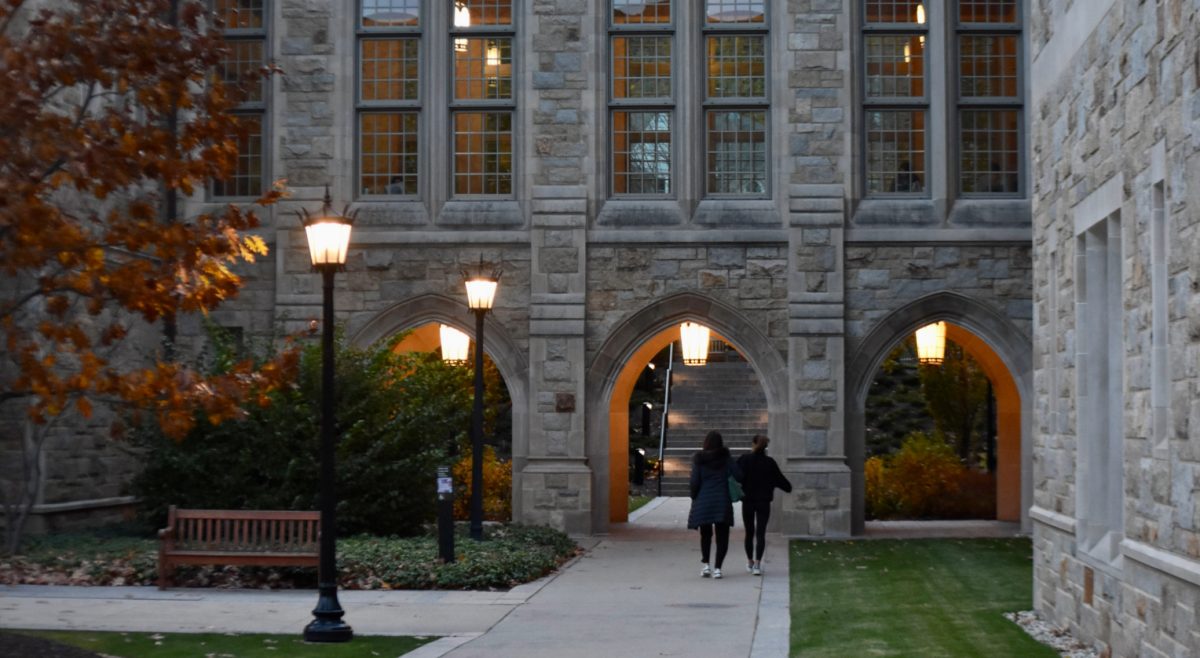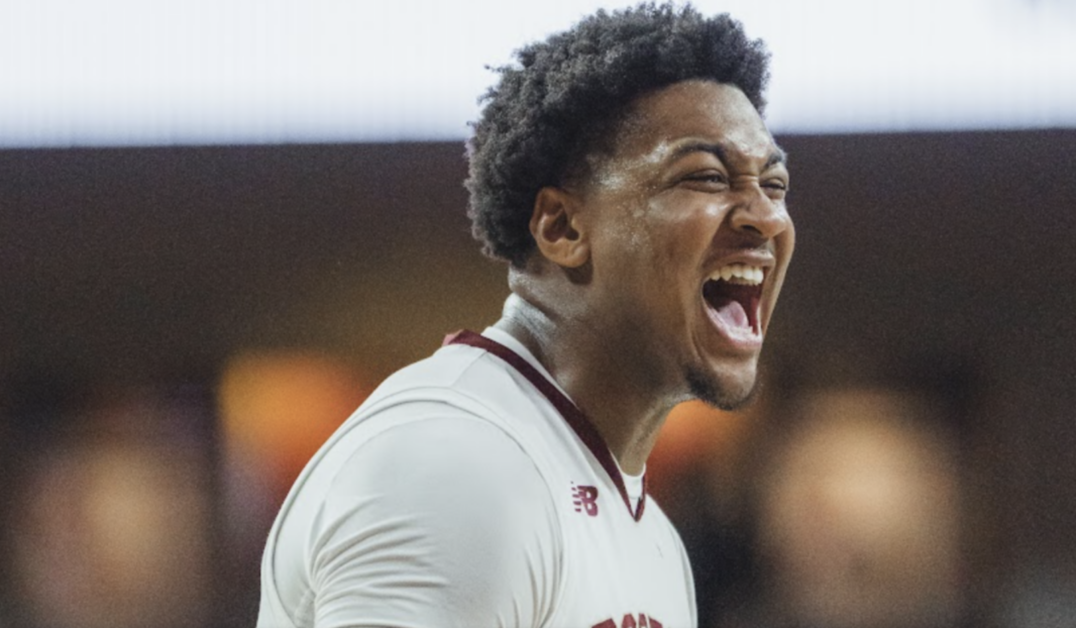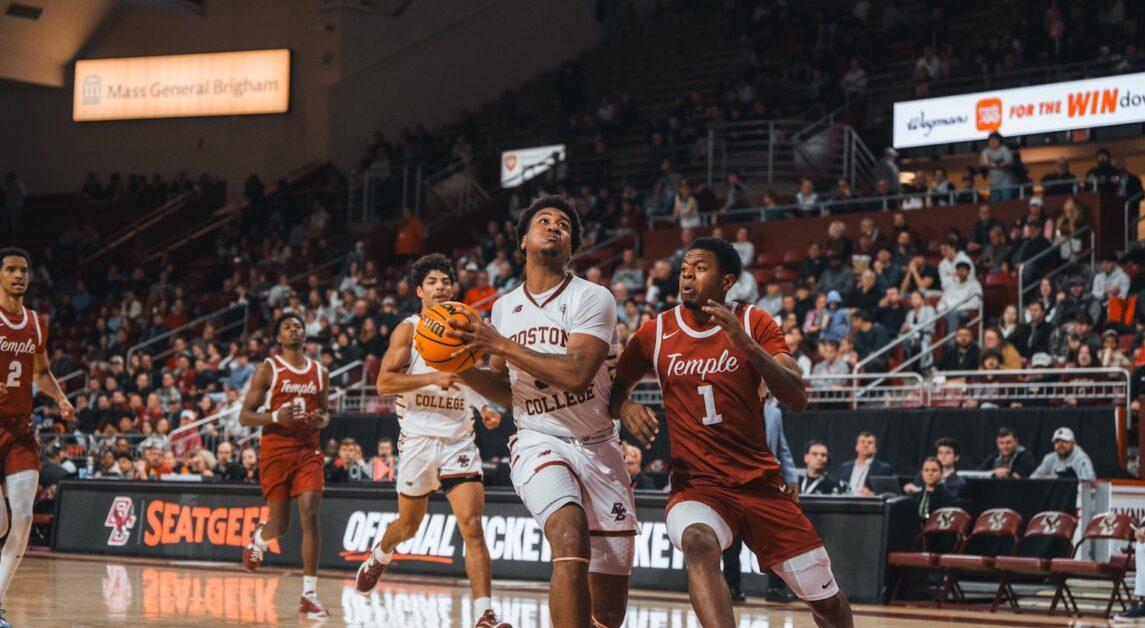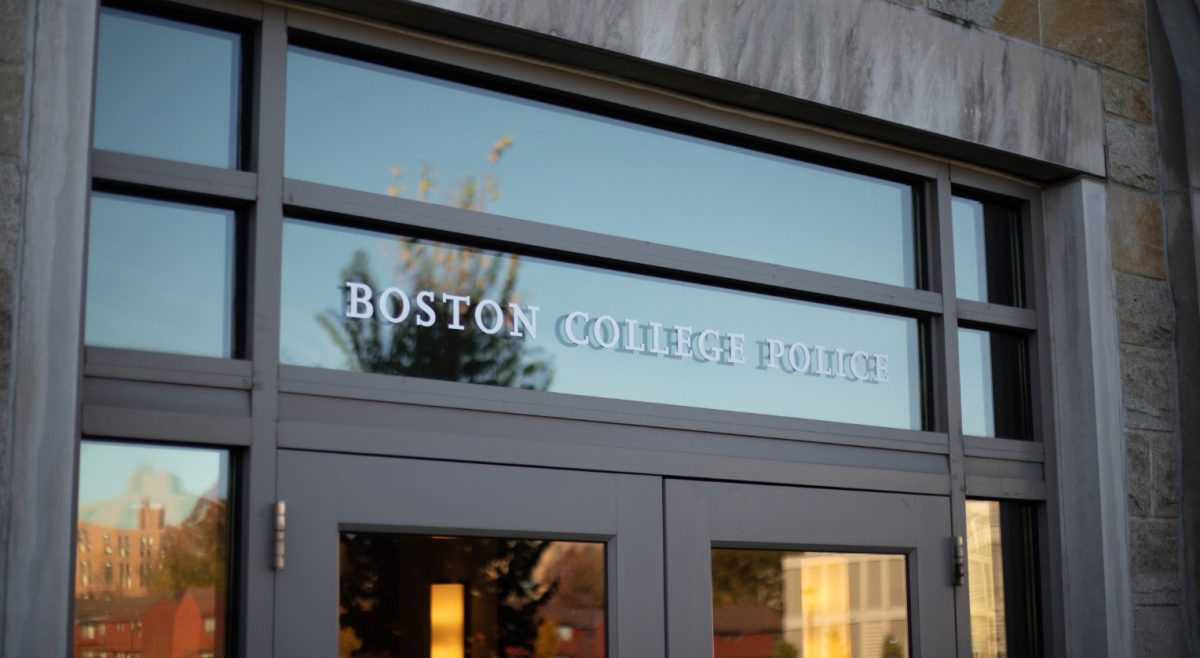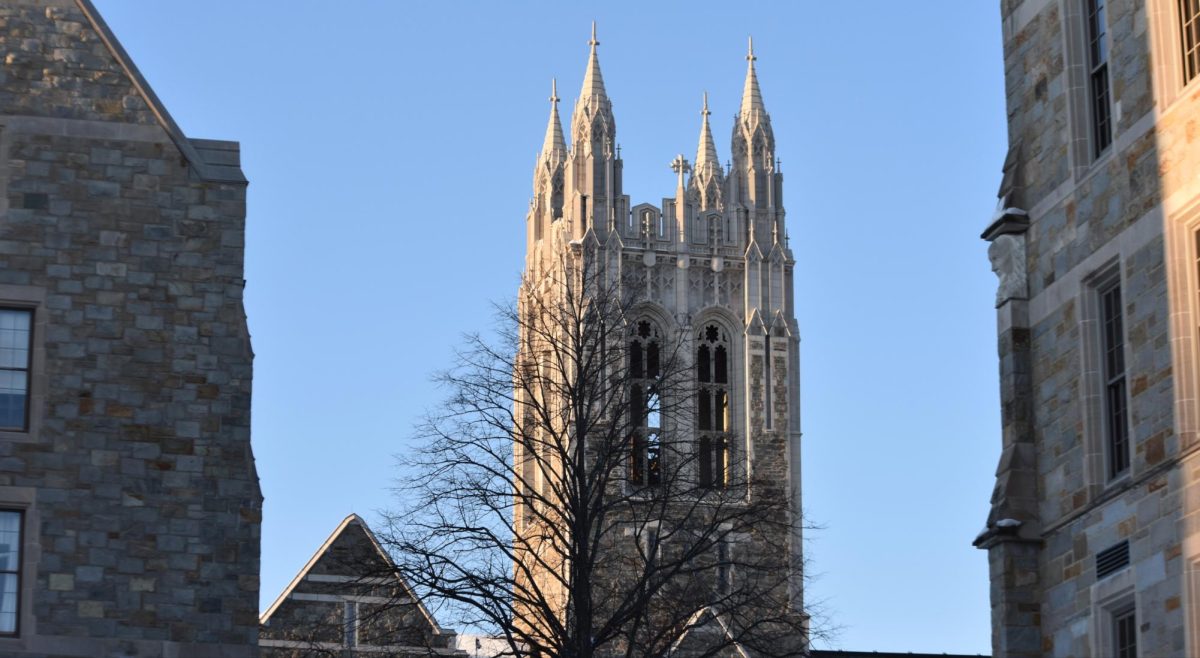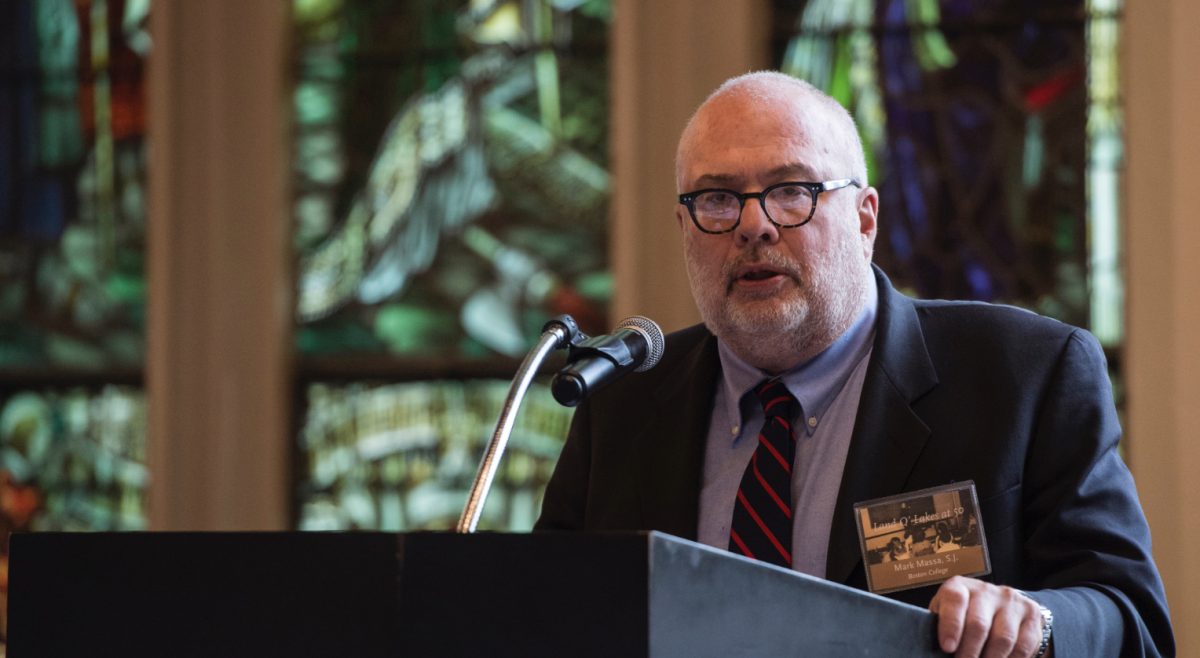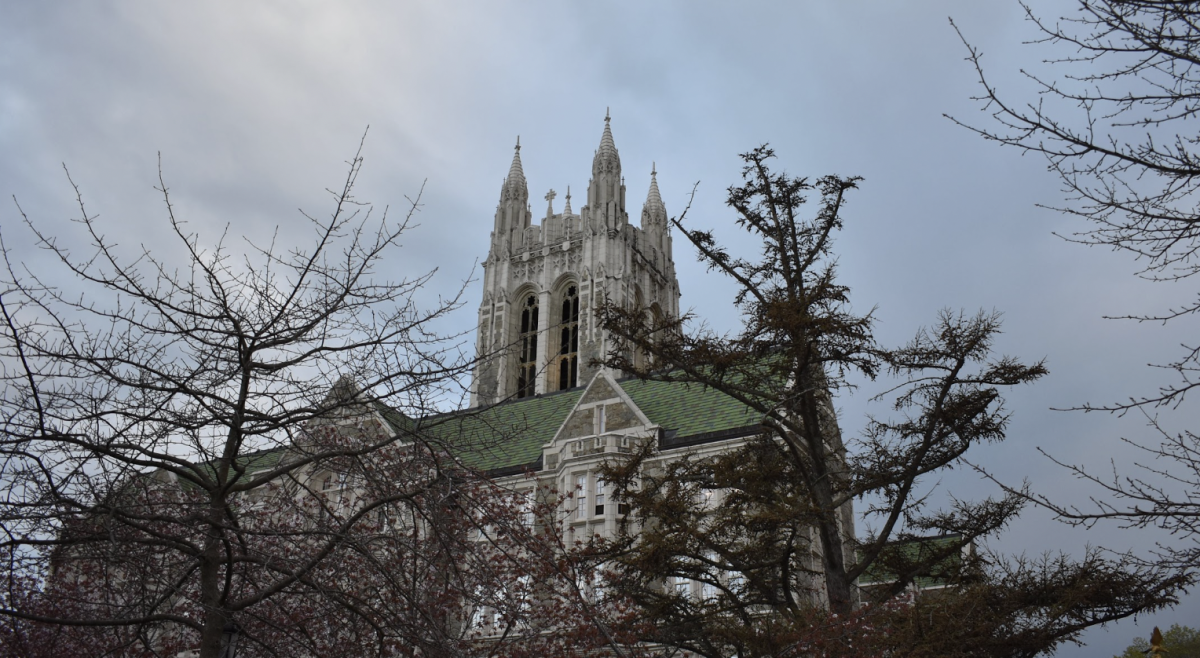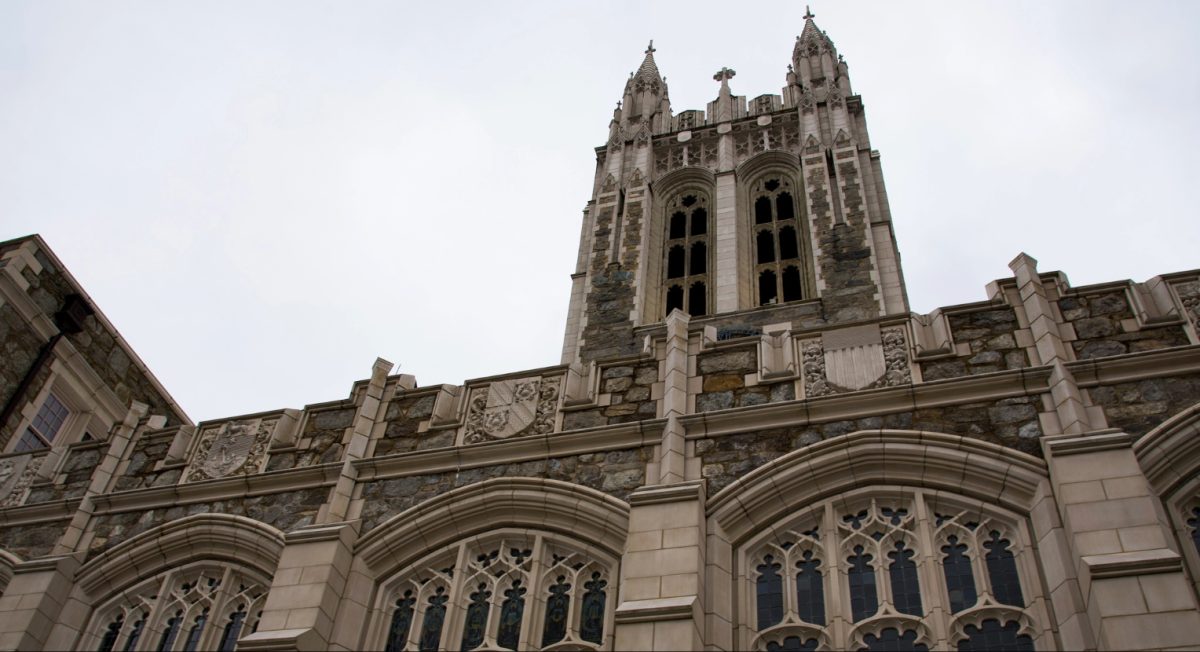Twice as many rapes and four times as many fondlings per student were reported at Boston College than at the average of its competitor schools in 2018, according to data from campus safety reports. The numbers were released in accordance with the Clery Act, which requires colleges and universities receiving federal funding to publish campus crime statistics yearly by Oct. 1.
There were 1.3 reported rapes per 1,000 total students at BC in 2018, compared to an average of 0.64 reported rapes per 1,000 students at the 12 schools with which BC has the highest crossovers in admitted students. There were 1.6 reports of fondling per 1,000 students at BC in 2018, compared to an average of 0.4 at its competitor schools.


On average, BC has received three times as many reports of rape and 3.7 times as many reports of fondling per 1,000 students than its competitor schools over the past three years.
This list of schools with the highest crossovers in admitted students includes Villanova University, Northeastern University, Boston University, Fordham University, University of Notre Dame, University of Virginia, New York University, Georgetown University, University of Massachusetts – Amherst, George Washington University, University of Southern California, and College of William and Mary.
The reports only list crimes that occurred within universities’ “Clery geography,” which includes on-campus property, public property that is within or immediately adjacent to campus, and non-campus property that is owned or controlled by the university and frequently used by students for educational purposes.
Melinda Stoops, BC’s student Title IX coordinator, explained that it’s difficult to know what the Clery Act numbers mean, as well as the possible reasons behind BC’s higher numbers.
“I can’t tell you if it’s that there’s a greater percentage of students at Boston College reporting rape and fondling than other institutions or if there’s a greater number of occurrences,” she said. “We don’t know what’s behind the numbers. We just know that that’s the number.
“I firmly don’t believe that we’re less safe than other campuses—I feel like we are a safe campus—but I can’t explain why these numbers are higher.”
One reason for the discrepancy, Stoops said, could be the fact that the vast majority of undergraduates—the population from which most of these reports come from—live on campus at BC.
“If you have an institution that has a large percentage of students living
BC does in fact have a higher proportion of undergraduates living on campus than its competitor schools. Eighty percent of BC’s undergraduates live on campus, while the average proportion of undergraduates living on campus at BC’s competitor schools is 58 percent.
But BC’s housing situation alone cannot account for the differences in reporting numbers it experiences with universities such as Notre Dame and Georgetown—which house 78 and 77 percent of their undergraduates on campus, respectively. Despite their similar on-campus housing proportions, BC has consistently experienced higher reports of rape and fondling than these schools over the past three years, with the exception of Georgetown’s 2016 report, which listed a higher number of fondlings than BC’s.
As required by the 2013 Violence Against Women Act, the campus safety reports also disclose reported instances of dating violence, domestic violence, and stalking. Over the past three years, BC has received 2.6 times as many reports of domestic violence per 1,000 students—0.63—than the average of its peer institutions, but similar amounts of dating violence reports and fewer reports of stalking per 1,000 students.



All of BC’s employees except for those in confidential or privileged roles are considered “responsible employees,” meaning that if someone tells them about an instance of sexual misconduct, they must report it to Stoops; the BC Police Department; or Patricia Lowe, the Title IX coordinator.
Employees in confidential settings such as the Sexual Assault Network (SANet) and University Health Services are also required to pass along the number of reports they receive, although they do so without identifying information about the student, according to Stoops. The only employees who are not required to pass along any information about instances of sexual misconduct are those considered “privileged resources,” which refers to the professional counselors at University Counseling Services and the pastoral counselors in Campus Ministry.
The number and type of employees that are required to report instances of sexual assault to the police or Title IX coordinator differs from institution to institution, which could be another reason behind BC’s higher reporting numbers in comparison to its peer schools, according to Stoops.
Some universities have a much narrower scope of who is considered a responsible employee than BC does—at NYU, for example, only employees who are in leadership or supervisory positions “or who have significant responsibility for the welfare of Students or Employees” are considered responsible employees.
At other peer institutions, including Fordham, Notre Dame, Virginia, and William and Mary, the medical providers at the health services centers are not required to report incidents of sexual misconduct that they are informed about like BC’s UHS employees are.
“One would imagine that the greater number or greater percentage of your employees who are responsible employees, the more reports you’ll probably get,” Stoops said. “At BC, if a student makes a report to an employee, most of the employees have to report it—whereas not every school has that same assignment.”
Stoops said that most of the reports she receives come from sources other than herself, such as responsible employees.
“It’s unusual for a student to walk into my office as the very first contact,” she said. “They may go to help a professor and then get referred to me, and then I reach out to them, and they come in and talk to me. But we really rely on people in the community reporting and helping us—then follow up and care for the student.”
Stoops emphasized that there is a difference between reporting an incident to a responsible employee and filing a complaint. When students report a sexual assault, it is always their choice about whether they want to file a complaint, except for in the unusual case in which the University determines the report entails a threat to the community.
“If a weapon was used, or if there’s something where we really felt like there was a danger to the community, or we felt like this was a pattern of repeated behavior by someone, we would need to investigate that,” Stoops said. “The student who made the complaint could choose not to participate in the investigation, but we do have an obligation to protect the community as well.”
Stoops said another factor that might play a role is the comprehensive approach the University takes to handle sexual assault education on campus. First-year students take the online sexual assault prevention course Haven over the summer, attend the “Speak About It” performance on consent during Welcome Week, and receive Bystander Intervention Training in their residence halls later in the year.
“So by the end of the first year, all students have had three points of training about sexual violence—which is unusual,” she said. “Most schools don’t have three points.”
The multiple-point approach could be helping BC students finish their first year better educated about sexual assault reporting, Stoops said.
“You do something in the fall, and you may forget about it … [but] then if you have
While the information included in the Clery reports is helpful, Stoops emphasized how limited it is.
“It’s a mixed bag when Clery comes out,” Stoops said. “With that said, I understand the intent of it, and I think that transparency is always a good thing … But I think also you have to look at it and recognize that this only represents a piece of everything.”
*Reports per 1,000 students were calculated using enrollment data from the fall of the year the crime was reported.
Owen Fahy, Madeleine Romance, and Andy Backstrom contributed to this report.
Featured Graphics by Ally Mozeliak / Heights Editor
Featured Image by Jonathon Ye / Heights Editor





